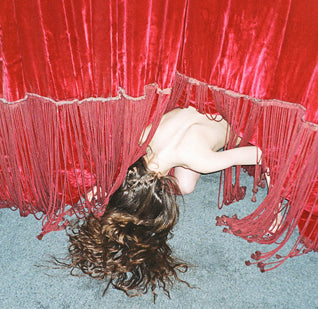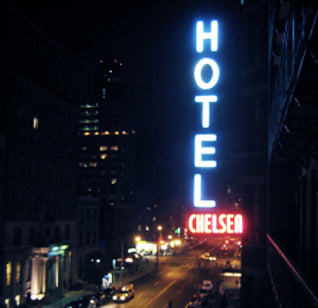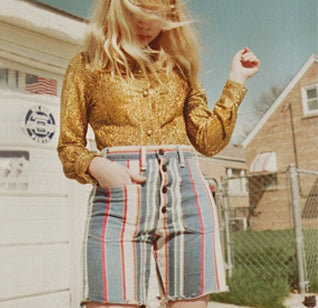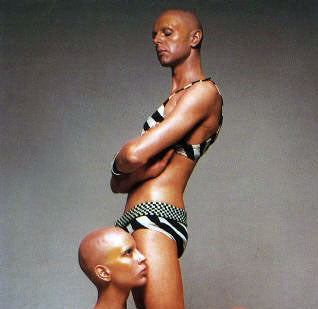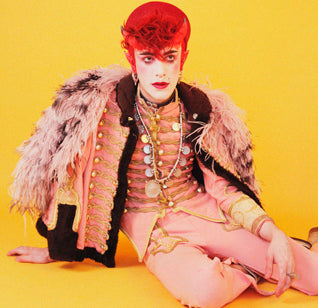FASHION PHOTOGRAPHY THAT CHANGED THE ‘90S
Nan Goldin, Juergen Teller and Corinne Day capture the raw and real generation
by Greg French
In the 1990s, something strange began to happen with the construction of the fashion image. Following the close of the ‘80s – a period where sex was glamorized within an inch of its life – our representations of fashion went through somewhat of a paradigm shift. Gone were the constructs of the highly glamorized fashion shoot, replaced with intimate snapshots of day-to-day life. Whilst the fashion photograph’s aim of story telling remained, these stories weren’t that of fantasy. Instead they became about the every day.
It was the likes of Corinne Day, Nan Goldin and Juergen Teller that helped shape the visual identity of a generation – telling the stories of the people of that time and shattering the illusion of previous fashion imagery. “Behaving like ‘human beings’ and documenting ‘realistic’ activities became a prominent feature of contemporary ‘90s fashion photography,” wrote fashion theorist Elliot Smedley. Those images took to realism in order to be more reflective of daily life.

Corinne Day is one of the few contemporary artistic woman photographers to create “artless” snapshot to create personal raw imagery.

Kate Moss captured by Corinne Day, 1990.
Subcultures such as punk, mod and soul - that had increased in popularity in the precedent 90s eras – had subverted into new cultural groups, creating a hybrid generation that is much more difficult to identify to its precedent styles. As such, fashion photography needed to reflect that spirit of individualism in order to remain commercially viable within magazines. Publications such as i-D and The Face rose to success as a result, due to a growing desire to see what was happening on the streets as opposed to heavily constructed shoots in the studios.
Let’s think about the term ‘to be in fashion.’ For something to meet that requirement, it has to be of the moment, so great fashion photography has to capture the spirit of that time. With the ‘90s demonstrating a time of economic, political and social unrest, the fashion photography of the time had to reflect this. Those constructed tableaux therefore of photographers past, no longer met those requirements. Instead the “artless, the unstaged, the semiconscious, the sexually indeterminate and the pubescent” had to be captured in order to demonstrate the zeitgeist.

Amanda at the sauna at Hotel Savoy by Nan Goldin,1993. Courtesy of Matthew Marks Gallery.

Helmut Lang s/s by Nan Goldin, 1996

Greer and Robert on the bed, by Nan Goldin, 1982
It was to be a young Kate Moss, captured by the lens of realist photographer Corinne Day that remains the visual signature of that stance. Day’s work captured a young Moss long before she had acquired her supermodel status, posing topless in several black and white photos, youthfully smiling and seemingly innocent. Her underdeveloped body and ordinary appearance epitomize the teenage experience – a time of freedom and senseless frivolity. The pair were to become friends – sharing vacations over long summer days at Corinne’s flat by the sea.
Sounds innocent enough? Perhaps not so much at the time, with the images causing grave concern amongst the fashion pack and indeed the wider fringes of society. It was argued that this type of photography glamorized low-culture, sexual promiscuity and substance abuse, and catapulted the term ‘heroin chic’ into the sentences of national newspapers. Robin Muir, the then image-editor of Vogue at the time, described the photos as “eerie stills from a gritty documentary or freeze frames from someone’s home movie. Whatever they were, they weren’t fashion photographs.”

Kristen Mcmenamy captured by Juergen Teller,1996.

Dakota Fanning for Marc Jacobs by Juergen Teller (Detail).
With the fashion photograph so accurately reflecting a specific moment in time, it began to align itself more ubiquitously with that of the work of art. The fashion photography of the 1990s was poised so ambiguously between that of fashion and art that the fashion image began to find its way onto the walls of the gallery space. It was, as Barthes described, “the explosion of the private into the public”. Fashion photography began to reflect notions of the Flaneur – the modern day photographer who wanders the city, capturing his surroundings as he discovers them.
That’s a notion that’s reared its head again today. Look at Instagram – the app that facilitates just that – and the addition of the iPhone into the arsenal of the modern day fashion photographer. The fashion image of the present day indeed throws back to that ‘90s aesthetic – with photographers now using the instancy of technology to share that snapshot moment. But why? It goes back to that intimate moment between Kate Moss and Corrine Day. Put simply, its about a connection between people. Perhaps in today’s world that seems so governed by technology and the fast pace that fashion has found itself in, that human connection is something we as a generation crave. And if that’s a photograph that doesn’t shock us anymore, well then the fashion photograph will be able to convey something very beautiful indeed.












